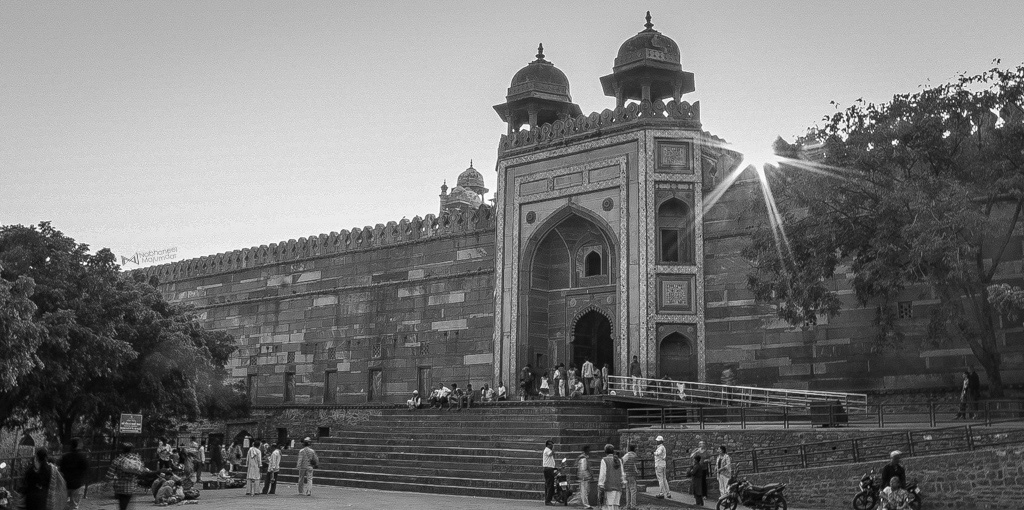When I looked at the ‘darwaza’, I felt as if the king was about to enter through it, riding a majestic horse, coming back victorious from a battle
– Dada
Dada (my grandfather) often told me about Fatehpur Sikri and its grandeur. Occasionally, I used to think that he was exaggerating, but his descriptions never failed to pique my interest about the city-fort. Akbar’s reign is perhaps one of the few sections of my history book that I loved reading and the prospect of visiting his kingdom’s blooming capital was very exciting.
After our splendid tour of the Taj Mahal, we had breakfast and Mr. Rupinder Singh (who was taking us to the various places) drove us towards Fatehpur Sikri. We boarded a bus from the car-parking area.
When one of the several entrances became visible, Dada’s description came to my mind.
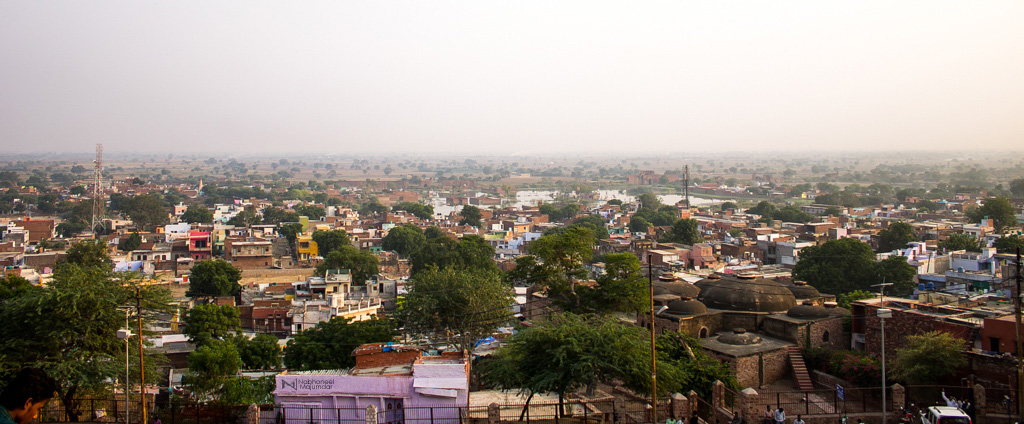
The city had been abandoned after 1585 due to the proximity of the Rajput neighbourhood and scarcity of water. It had remained a ghost town following the abandonment.
Now, however, it is one of the best-preserved elements of Mughal architecture.
Our time was limited (owing to our relatively late hour of visit), and we hired a guide who explained to us a few sections of the fort.
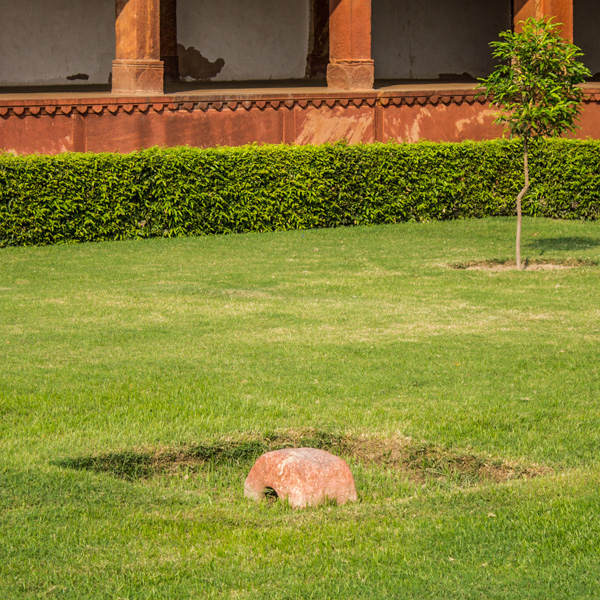
The above hoop was supposedly used as a tool for delivering capital punishment: an elephant used to be tethered to trample a criminal.

The Diwan-i-khas is a simple square building. However it is famous for the central pillar.
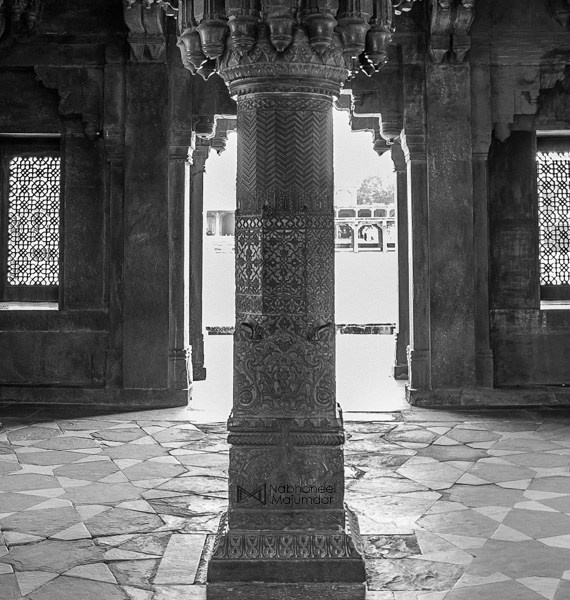
The Dīn-i Ilāhī (Persian: دین الهی lit. “Religion of God”) was a syncretic religion propounded by the Mughal emperor Akbar the Great in 1582 AD, intending to merge the best elements of the religions of his empire, and thereby reconcile the differences that divided his subjects.
-Wikipedia
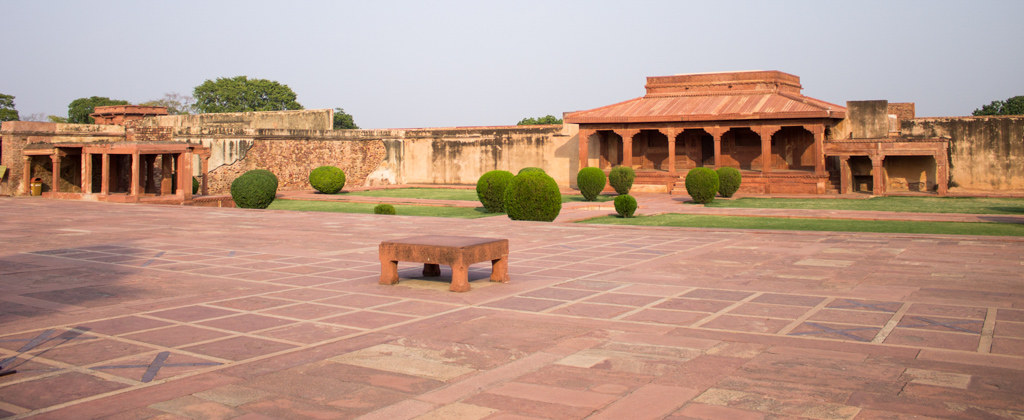

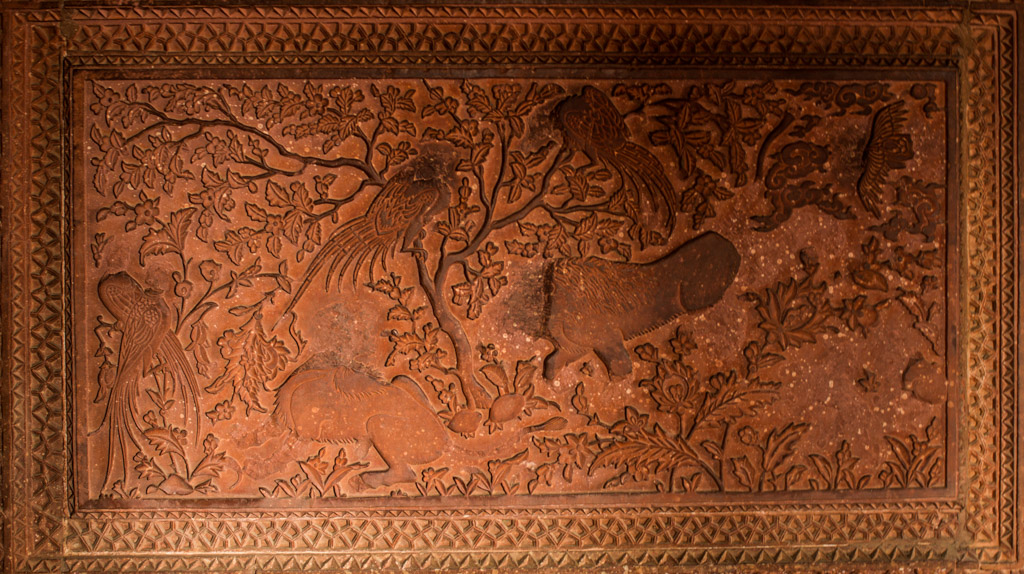
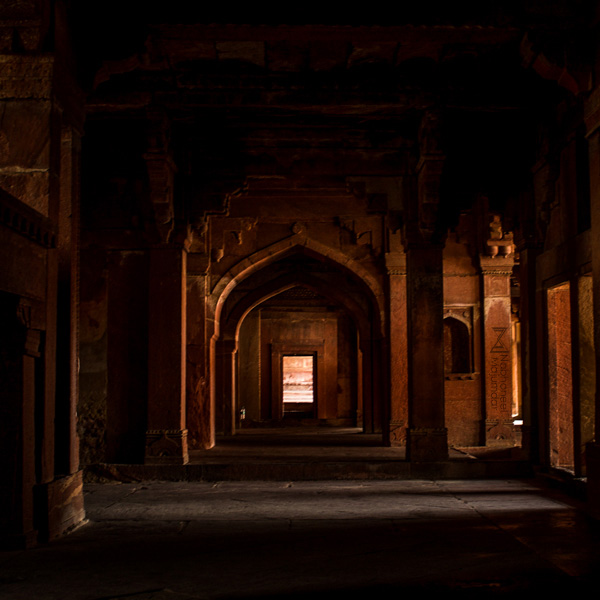
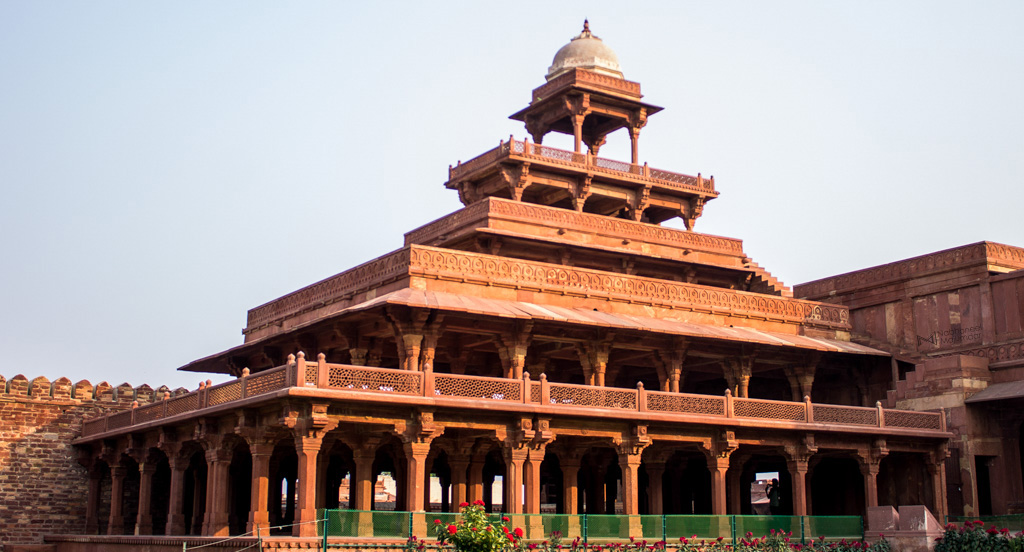
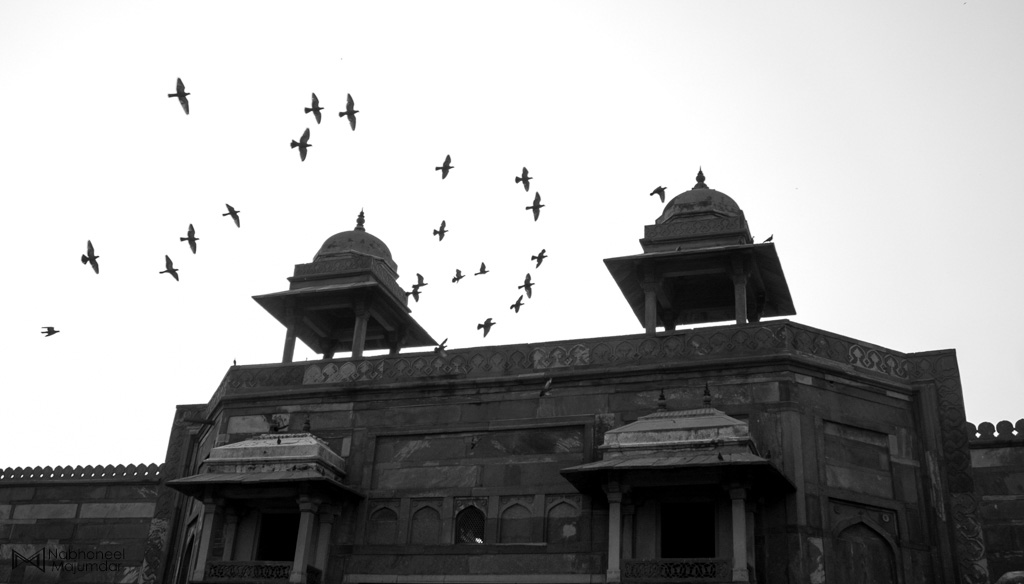
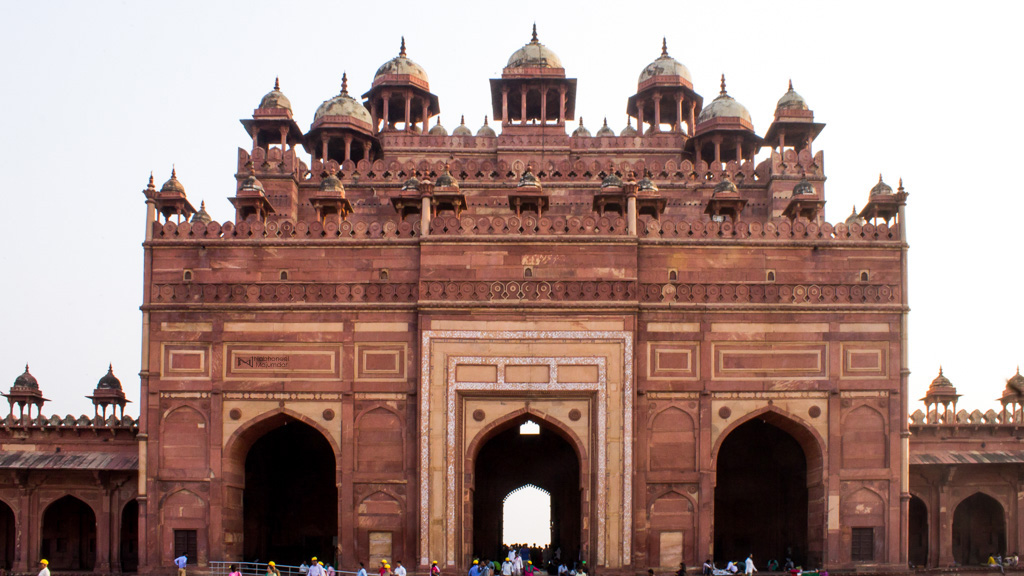
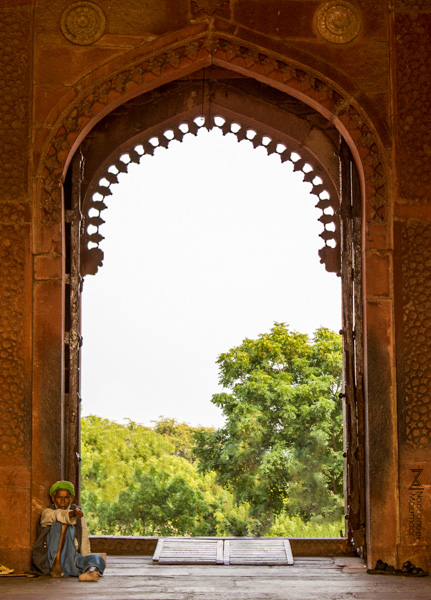
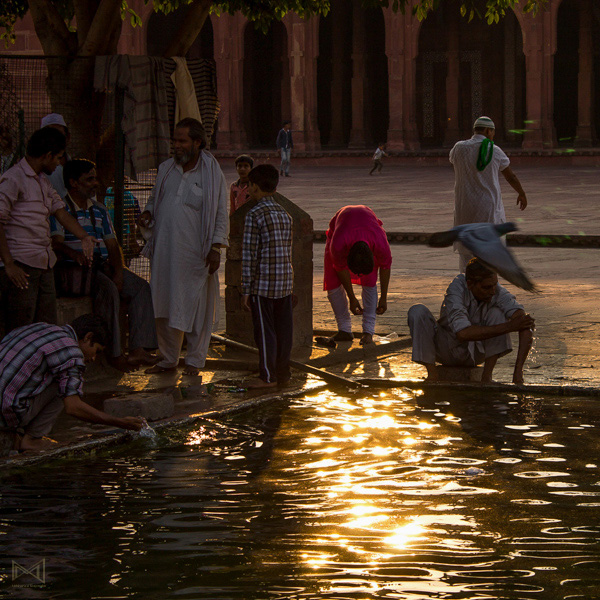
The area behind the Buland Darwaza contains the Tomb of Sheikh Salim Chisti.
Chisti had blessed Akbar soon after which he had had three sons.
Akbar had Fatehpur Sikri built around his camp. Nowadays, people believe that offering prayers at the mazar (mausoleum) fulfils whatever one wishes.
We had barely covered one-third of the fort. It is huge. It is lively. It is something to be witnessed, but it requires an entire day.
In short, we covered (very briefly) two places in Agra on the 3rd of November, which are two of the finest examples of Mughal architecture.
